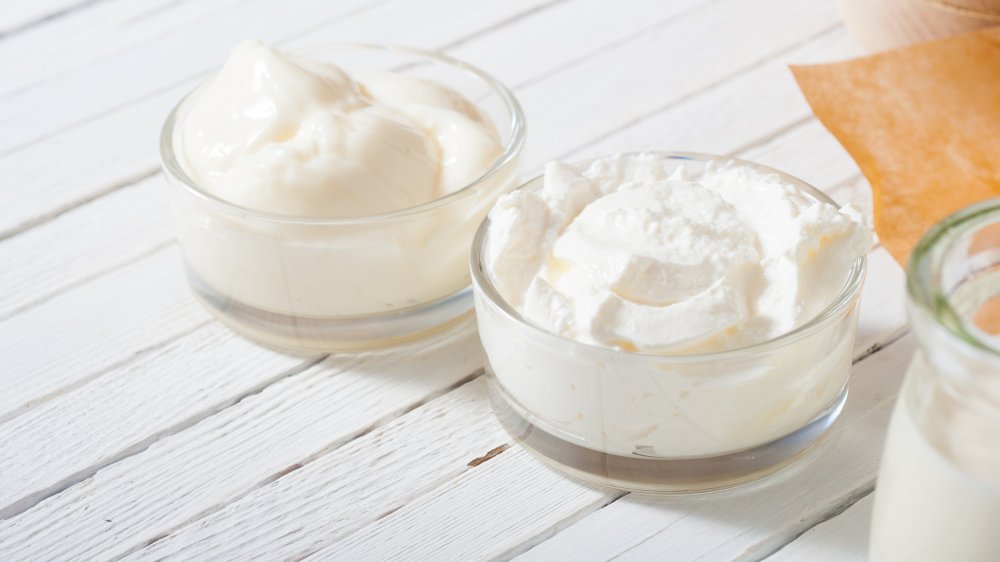Here's The Real Difference Between Creme Fraiche And Sour Cream
Sour cream and creme fraiche can both add a tangy wallop to dishes whether garnishing flaky fish taco or a velvety chocolate mousse. However, each pearly condiment offers distinct cooking properties thanks to their somewhat subtle differences.
Both begin as fresh cream and undergo a ripening, or souring, process. Though they rely on different bacterial cultures for transformation. Sour cream, originating in Eastern Europe and Russia, calls for the addition of bacteria to convert the cream's lactose – aka milk sugar – to lactic acid (via MasterClass). This process thickens the cream and adds a delicious, decidedly sour note to boot. For an even thicker consistency, such stabilizers as gelatin and rennin can be incorporated (via Eater).
In France, creme fraiche is traditionally made with unpasteurized cream, which already boasts the necessary bacteria for ripening. In the U.S., however, manufacturers must abide by pasteurization laws and therefore add in bacteria to initiate culturing (via Chowhound). Either way, creme fraiche tends to be thicker than sour cream and has a milder flavor reminiscent of its sweet cream namesake.
Sour cream and creme fraiche have different uses
Another key distinction between sour cream and creme fraiche comes down to fat content. Sour cream is 20 percent fat while creme fraiche is 30 percent. Sour cream packs more protein, which can be a problem when it comes to cooking. Sour cream is prone to curdling when simmered or boiled and is best stirred into dishes at the end of cooking or, better yet, used as the final flourish while plating. Creme fraiche, on the other hand, can withstand being added directly to soups and sauces (via The Kitchn).
The two cultured creams also have different flavor profiles. Sour cream is often relished in savory dishes like nachos and blinis while creme fraiche is known for taking scones and fresh berries to the next level. The difference in flavor is related to their acidity. Sour cream is, as its name implies, more tart than creme fraiche, and this also impacts cooking.
According to MasterClass, sour cream's acidity level can break down gluten structures in baked goods. This is a good thing. An abundance of recipes for sour cream coffee cake, pound cake, chocolate cake, cheesecake, and donuts offers ample testimony to the fact that sour cream helps keep desserts moist.

